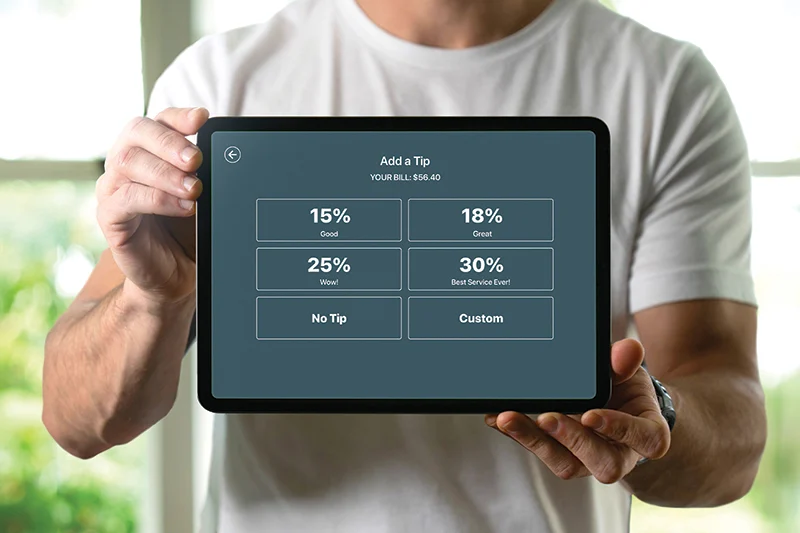Tip Screen Basics And Importance
Tip screen serves as an essential tool for guiding users through applications or websites. Implementing a tip screen effectively can reduce user confusion, enhance usability, and improve overall satisfaction. Designers should focus on clarity, timing, and relevance when introducing tip screens to ensure they provide value rather than distraction. Each tip screen should convey concise instructions or guidance that encourages correct actions without overwhelming the user.
- Tip Screen Basics And Importance
- Understanding Color Psychology In Design
- Effective Animation Strategies
- User Feedback Mechanisms
- Typography Choices And Readability
- Gamification Techniques For Engagement
- Accessibility Considerations In Interface Design
- Effective Layout And Spacing
- Voice Interaction Trends
- Behavioral Analytics For UX Optimization
- Content Personalization Strategies
- Emerging Technologies In User Experience
- Security Awareness And User Training
- Mobile Optimization Techniques
- Cross-Platform Design Consistency
- Performance Metrics And Continuous Improvement
- Future Trends In User Assistance
- Conclusion
Understanding Color Psychology In Design
Colors play a critical role in user interaction and perception. The right color combinations can evoke emotions, increase engagement, and guide attention toward key interface elements. Choosing the wrong palette, however, can lead to frustration or confusion. Designers should consider cultural context, accessibility, and visual harmony to create a visually appealing experience.
Effective Animation Strategies
Subtle animations can make digital experiences feel more dynamic and intuitive. For instance, fading effects, sliding menus, and hover interactions can highlight important elements without disrupting navigation. Animations should enhance comprehension rather than distract from functionality.
User Feedback Mechanisms
Collecting feedback through surveys, forms, or in-app prompts allows designers to understand user preferences and challenges. A tip screen combined with feedback mechanisms can adapt instructions based on common mistakes or frequently asked questions. This approach ensures continuous improvement and enhances user satisfaction.
Typography Choices And Readability
Typography affects how users perceive and interact with content. Selecting legible fonts, appropriate sizes, and consistent spacing improves readability. Proper typography supports tip screens by making instructions easily scannable and digestible.
Gamification Techniques For Engagement
Gamification elements such as badges, progress bars, and rewards motivate users to complete tasks. Integrating these techniques alongside tip screens encourages consistent interaction and promotes learning through playful incentives.
Accessibility Considerations In Interface Design
Ensuring accessibility is crucial for reaching diverse audiences. High contrast text, alternative text for images, and keyboard navigation support inclusivity. Accessibility-focused design allows tip screens to guide without excluding users with disabilities.
Effective Layout And Spacing
Organizing interface elements with proper alignment and spacing creates a visually coherent experience. Strategic layouts reduce cognitive load and make it easier for users to follow instructions. Well-placed tip screens within structured layouts feel natural rather than intrusive.
Voice Interaction Trends
Voice-enabled technology is reshaping how users interact with devices. Incorporating voice commands alongside visual tips provides a multimodal experience, improving efficiency and accessibility.
Behavioral Analytics For UX Optimization
Monitoring user behavior reveals patterns that inform design improvements. Analytics can track tip screen interactions to identify sections where users struggle. Using this data allows for refinement of guidance to maximize usefulness.
Content Personalization Strategies
Personalizing experiences increases relevance and engagement. Tailoring tip screens based on user preferences, location, or previous interactions improves clarity and reduces unnecessary repetition.
Emerging Technologies In User Experience
Augmented reality, virtual reality, and AI are transforming interaction design. Tip screens in these environments provide immediate, contextual guidance, reducing learning curves and enhancing immersion.
Security Awareness And User Training
Educating users about security practices remains essential. Tip screens can serve as reminders for password safety, phishing detection, and proper data handling. Clear instructions help users adopt secure habits effortlessly.
Mobile Optimization Techniques
Optimizing interfaces for mobile devices requires consideration of screen size, touch gestures, and performance. Tip screens should remain concise and responsive to provide guidance without obstructing content.
Cross-Platform Design Consistency
Consistency across devices ensures users can switch platforms without confusion. Maintaining uniform styles, interactions, and tip screen placement strengthens recognition and usability.
Performance Metrics And Continuous Improvement
Evaluating key performance indicators like engagement rates, completion times, and error frequency helps track design effectiveness. Regularly updating tip screens based on metrics ensures the interface evolves with user needs.
Future Trends In User Assistance
AI-driven recommendation engines, predictive assistance, and contextual tip screens are shaping the future. These innovations offer personalized support that anticipates user needs, enhancing the overall experience.
Conclusion
Tip screens are a powerful tool when applied thoughtfully. Their effectiveness depends on clarity, relevance, and timing. By combining tip screens with analytics, personalization, accessibility, and emerging technology, designers can create seamless and intuitive digital experiences that resonate with users.



